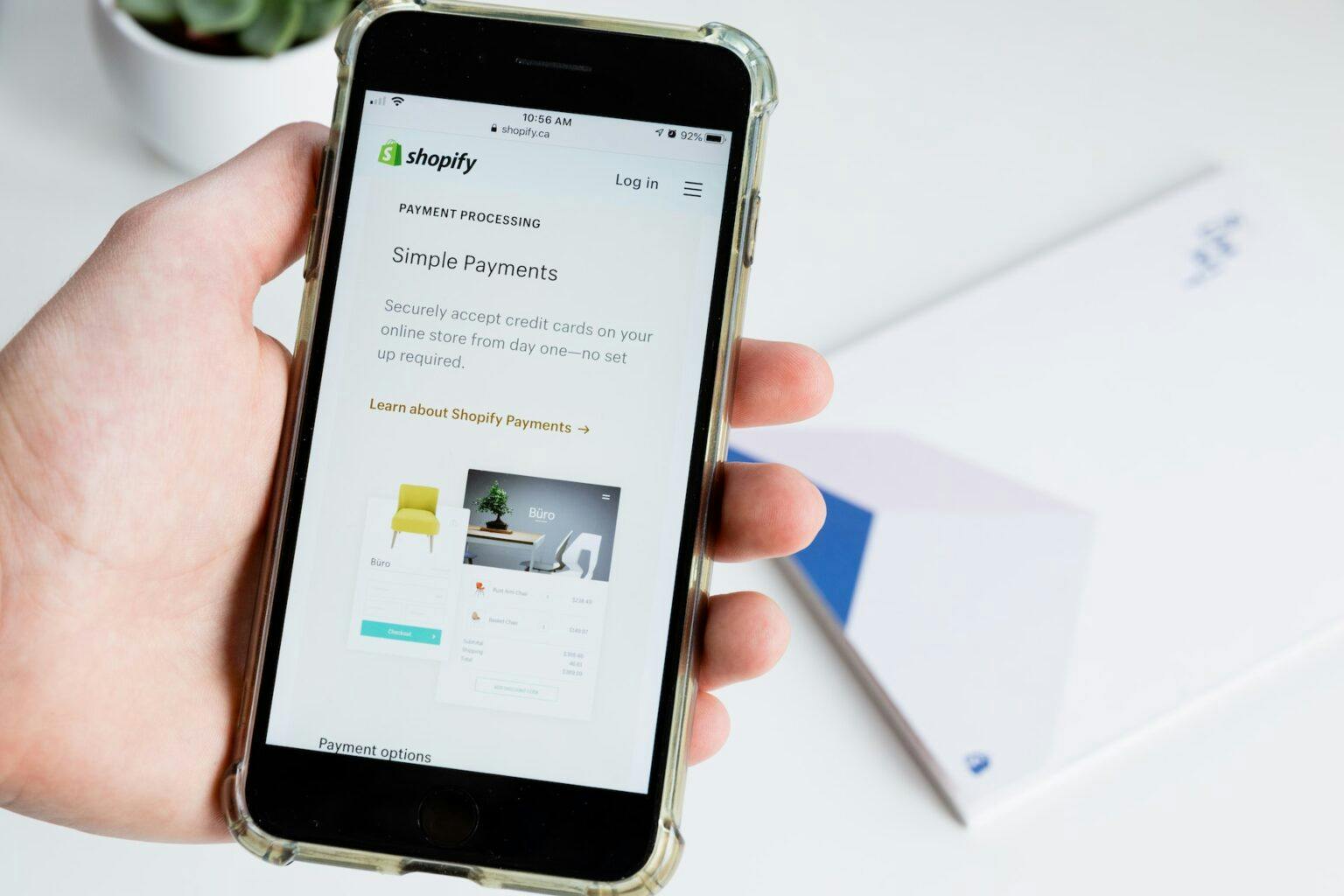9 Industry Leading Web Design Software & Tools
Published 2021-01-11T06:00:52 by Bryan Miller
When you’re creating a website that will represent your brand or business, you will engage in web design, which determines how your website will be displayed on the internet. There are many components of web design, which extend to user experience design, search engine optimization, user interface design, and web graphic design. While it’s recommended that you know the basics of coding when building a website, there are numerous software providers and tools that can streamline the web design process for you.
When you choose the right tools for designing your website, the process can be relatively straightforward. However, there are many different tools that you can select from, which can make it difficult to find the ideal web-design software. When you’re searching for the best software that’s also simple-to-use, make sure that you look for pieces of software that provide you with expansive web-design features. Keep in mind that the majority of providers will offer different plans for their software, which means that you can select the plan that best meets your needs.
Many of these tools are free or offer free trials that you can use to test the software features. Before you select the software that you believe will allow you to create a compelling and appealing website, some questions that you should ask yourself include:
- How long do you have to build the website?
- Is your business a B2B or B2C company?
- Who is your primary audience?
- How large is the website supposed to be?
- How many features will the website have?
- Who are your top competitors?
- What are your main goals for the website?
If you can answer all of these questions, it should be easier for you to identify the tools that will help you design a great website. Among the most important questions to answer before getting started is what type of customer you plan to do business with. Are you selling your services/products to other businesses or to consumers. Answering this question will dictate the type of software that you want to use and what kind of website you would like to design.
Key Takeaway:
- This guide takes a look at nine of the top software providers and tools in the web-design industry explaining both the pros and cons of each.
1. WordPress

WordPress is a highly reputable software that’s currently the most widely used content management system on the internet. WordPress first began as software that could be used to create blogs and similar websites. Since then, it has expanded the features that it offers at a continual rate. Today, WordPress provides users with thousands of themes and plugins that help to enhance the functionality of the website.
You can start using the WordPress software for free. However, there are four separate pricing plans that include personal, premium, business, and eCommerce. This particular tool is great for freelancers, online stores, beginners, and small businesses. When using WordPress, you’ll be given access to a large number of free themes that you can use to customize your website. They also offer monetization and marketing tools that can help you expand your business now and in the future.
The benefits of using WordPress include:
- The premium plan gives you access to an unlimited number of premium themes
- Live chat and email support are available
- Almost no coding is required to design a website with WordPress
- Functionality is available for advanced customization of your website
- The storage space provided with your plan can range from 3-200 GB
The negative aspects of this particular software include:
- While WordPress is free to use, many of the top plugins and themes have a cost to them
- A standard drag-and-drop builder for websites isn’t automatically integrated into the CMS and must be purchased separately
2. Weebly
Weebly is a feature-rich website builder that offers advanced features that CSS and HTML experts should be able to get the most out of. The tool is free if all you require is basic features and functionality. Six additional plans are available for standard websites and eCommerce stores. These plans range in price from $5-$38 per month. Along with the drag-and-drop website builder available through Weebly, this software also offers easy-to-use tools, domains, and customizable templates. Support is available through phone, email, chat, and a community forum.
The advantages that come with using Weebly extend to:
- SSL security is provided for free
- Advanced features include site statistics, site search, and password protection
- When you select a premium plan, you will receive unlimited storage
As for the drawbacks, the problems of the Weebly software extend to:
- In the event that your website goes down for some reason, you won’t be able to bring it back up without first getting in touch with Weebly
- The drag-and-drop builder that they provide isn’t the easiest to use and can require extensive programming skills
3. Squarespace

SquareSpace is a creative web-design tool that’s best for artists and photographers who want to showcase their creativity and designs on personal websites. The main plans for using Squarespace include personal, business, basic commerce, and advanced commerce, which extend in price from $12-$40 per month. Along with artists and photographers, this tool offers enough functionality for small business, restaurants, and entrepreneurs.
The positive aspects of Squarespace include:
- The website that you create will automatically be optimized for smartphones and tablets
- The style editor available through Squarespace includes hundreds of different customizable colors, page configurations, and fonts
- Free Google fonts, starter layouts, and typeset fonts are available to help you get started
The negatives of using Squarespace include:
- An app store isn’t provided, which means that you can only use built-in features
- It can take some time to get used to the Squarespace tool
4. Adobe Photoshop
Adobe Photoshop is a powerful graphics editor that can help you design the graphical elements of your website. This particular tool is great for everyone and is commonly used by freelancers, small businesses, and large businesses. If you want to test the features of this product before purchasing it, a free trial is provided.
Once the trial has concluded, you can purchase a plan for anywhere from $10-$25 per month. The plans available to you include ones for individuals, businesses, students and teachers, and universities and schools. The tools that you can use in Adobe Photoshop extend to adding effects and colors, retouching and cropping images, combining photos, and removing objects.
The top benefits of using Adobe Photoshop include:
- You can combine text and photos to create entirely new images
- Their advanced features include an improved properties panel and an object selection tool
- Your work will be saved on the cloud, which means that you can start the project on one device and finish on another
Some issues that come with using Adobe Photoshop include:
- You may find it difficult to understand the user interface when you first start using the tool
- High-quality graphics are difficult to effectively render in Adobe Photoshop, which means that additional tools may be necessary
5. Google Web Designer

Google Web Designer is a comprehensive design suite that gives you the ability to edit the JavaScript, CSS, and HTML elements of a website. You can also easily toggle between code view and design view, which makes it easier to review the changes that you make to your website. This tool is best for medium and large businesses as well as web developers. Despite the extensive functionality that it offers, this software is free to use. A wide range of motion graphics and designs can be created with Google Web Designer.
The pros of the Google Web Designer software include:
- Features are provided for the creation and manipulation of 3D content
- Different components can be dragged and dropped into the website, which include maps, galleries, and video players
- It’s easy to create ads that are responsive and will work on any device
- Your creations can react to different user actions, which extend to rotation, shaking, or touch
The cons of Google Web Designer include:
- The source code may need to be looked at if you want to obtain precise results
- Text content creation isn’t possible with this tool
- The HTML files that you create with this software are difficult to access with other programs
6. Wix
Wix is a premium web-design tool that’s ideal when used to create small-scale business websites, personal websites, and portfolios. You can use this tool for free. However, enhancements can be made to your website by selecting a premium plan, which includes combo, unlimited, pro, and VIP plans. These plans range in price from $13-$39 per month. An enterprise package is also available at $500 per month.
The Wix platform gives you all of the features and tools that you need to create a fully functional website. For instance, you’ll gain access to hundreds of customizable templates as well as a large library of icons, images, and clip arts. When you select the free plan, you will receive 1GB of bandwidth and 500MB of storage.
The benefits of Wix extend to:
- You will have access to around 500 templates
- Advanced design features give you the ability to scroll effects, animations, and video backgrounds to the site
- Along with over 100 existing fonts, it’s possible to upload a font that you’ve designed on your own
- A drag-and-drop builder is included
Some of the issues that users encounter with Wix include:
- Premium plans only apply to a single website
- Revamping a website that’s created with Wix is difficult since you can’t transfer a theme from one website to another
7. Figma

Figma is an interface design tool that allows you to edit vector graphics and create prototypes of these graphics. This tool is mainly web-based and can be used on any device. Because of the high amount of functionality that this tool provides, it’s best used by professional web designers and individuals who have some experience with coding. This tool starts at $16 per month and gives you access to more than two million templates, graphics, design assets, photos, and themes that you can use for the creation of your website.
The advantages of the Figma software include:
- Interactive prototyping is easy and intuitive
- File sharing among team members is possible
- The user interface is fluid and fast
The main issues associated with Figma include:
- The tool lacks view options that could help beginners better understand how their designs are being changed
- Default settings may need to be altered to get the most out of the tool
- This application requires ample resources if you want to use it for a lengthy period of time
8. Adobe XD
Adobe XD is a prototyping tool that’s designed to assist with the creation of user interfaces, which means that the tool is ideal for designers who have experience with user-interface design. Because of the advanced features available through Adobe XD, the tool can be used by any business. When using Adobe XD, you can build an interactive prototype of your main design. The designs that you make in Adobe XD can be integrated into other Adobe applications and plugins. A basic version of this software is available for free with advanced functionality costing $10 per month.
The various benefits of Adobe XD include:
- Prototypes are simple to make of web, Android, and iOS applications
- Prototypes can run on any device
- Some design elements are available for free within the Adobe XD library
- The tool is simple-to-use and doesn’t require advanced coding knowledge
The issues with using Adobe XD include:
- Third-party plugins aren’t available
- Real-time collaboration isn’t possible with this tool
- The user interface can take some getting used to
9. Shopify

Shopify is a powerful eCommerce solution that provides full hosting services. If you’re thinking about creating an eCommerce website, Shopify is likely the tool to use. You’ll be given access to nearly 200 themes and templates that allow you to create a unique design. The tools available through Spotify are intuitive and easy to use. Along with the drag-and-drop builder, you can upload your own images, videos, and logos. When you want to test this tool, a free trial is available for 14 days. Three paid plans are then available for anywhere from $29-$299 per month.
The main benefits that you’ll encounter when using Shopify include:
- A 24-hour support team is available if ever you run into a problem
- The Shopify app store offers hundreds of add-ons that allow you to expand the functionality of your website
- It’s easy to scale your website to the needs of your business
- The tool is very easy to use
The cons of using Shopify extend to:
- You’ll need to obtain a separate template or app if you want to build a multi-language store
- Transaction fees are charged by Shopify in certain situations
- It’s not easy to create content that isn’t eCommerce in nature
This is a vast selection of tools that should give you everything you need to create a fully functional website. The majority of these tools are simple to use and don’t require extensive coding knowledge to operate.
Bryan Miller
Bryt Designs
Bryan Miller is an entrepreneur and web tech enthusiast specializing in web design, development and digital marketing. Bryan is a recent graduate of the MBA program at the University of California, Irvine and continues to pursue tools and technologies to find success for clients across a varieties of industries.
Subscribe to our newsletter
STAY UP TO DATE WEB DESIGN, DEV, & SEARCH MARKETING INSIGHTS & TIPS
Suggested Content
The Future of Websites: Navigating Web 3.0 with Headless CMS
Published 2024-03-18T06:00:00 by Devin Jackson
Headless CMS in Web Development: A Comprehensive Guide
Published 2024-03-04T06:00:00 by Grant Walton
Guide to Shopify Website Development and Why Headless is Better for Businesses in 2024
Published 2024-02-12T06:00:00 by Bryan Miller



